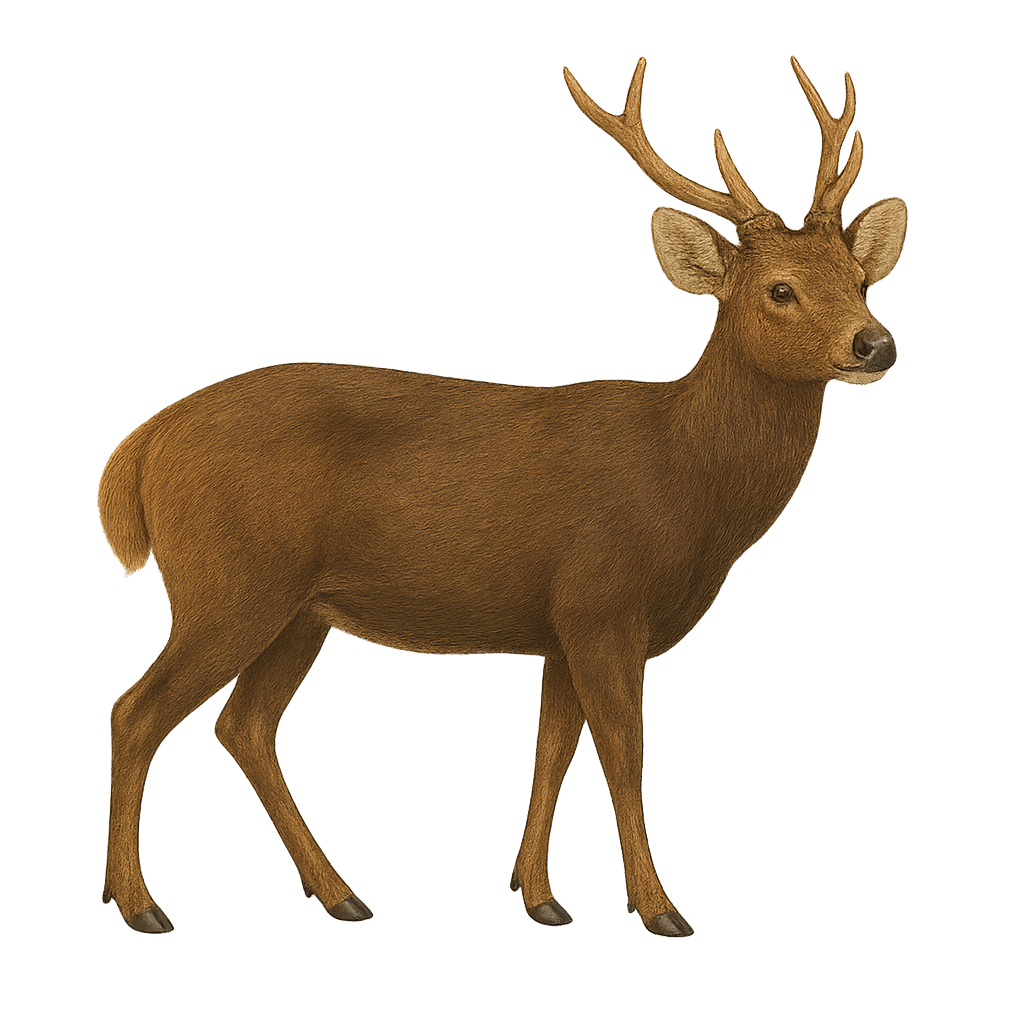Your wildlife photography guide.
Explore the hog deer in detail, study its behavior, prepare your shots.
Where to observe and photograph the hog deer in the wild
Learn where and when to spot the hog deer in the wild, how to identify the species based on distinctive features, and what natural environments it inhabits. The WildlifePhotographer app offers tailored photography tips that reflect the hog deer’s behavior, helping you capture better wildlife images. Explore the full species profile for key information including description, habitat, active periods, and approach techniques.
Hog deer
Scientific name: Hyelaphus porcinus

IUCN Status: Near Threatened
Family: CERVIDAE
Group: Mammals
Sensitivity to human approach: Suspicious
Minimum approach distance: 20 m
Rut period: September to October
Gestation: 220-230 jours
Births: April to June
Habitat:
Grasslands, wet forests, marshy areas
Activity period :
Mainly active at night, generally discreet during the day.
Identification and description:
The hog deer, or Hyelaphus porcinus, is a medium-sized deer native to South and Southeast Asia. It is characterized by its stocky body and relatively short legs, giving it a robust appearance. Its coat is brown with lighter shades on the belly and underparts. Males have short, thick antlers, often used in dominance battles. This deer prefers grassland and wet forest habitats, where it primarily feeds on grasses, leaves, and fruits. Although generally solitary, the hog deer can form small groups, especially outside the rutting season. It is known for its ability to move quickly through dense vegetation, making it difficult to observe in its natural habitat.
Recommended lens:
400 mm – adjust based on distance, desired framing (portrait or habitat), and approach conditions.
Photography tips:
To photograph the hog deer, it is advisable to use a telephoto lens of at least 400mm to capture detailed images from a distance. Given its suspicious nature, it is best to remain discreet and blend into the environment. The best photography opportunities usually occur at dawn or dusk when the deer is most active. Use a tripod to stabilize your camera and be patient, as these animals can be difficult to spot in dense vegetation.
The WildlifePhotographer App is coming soon!
Be the first to explore the best nature spots, track rutting seasons, log your observations, and observe more wildlife.
Already 1 431 wildlife lovers subscribed worldwide

